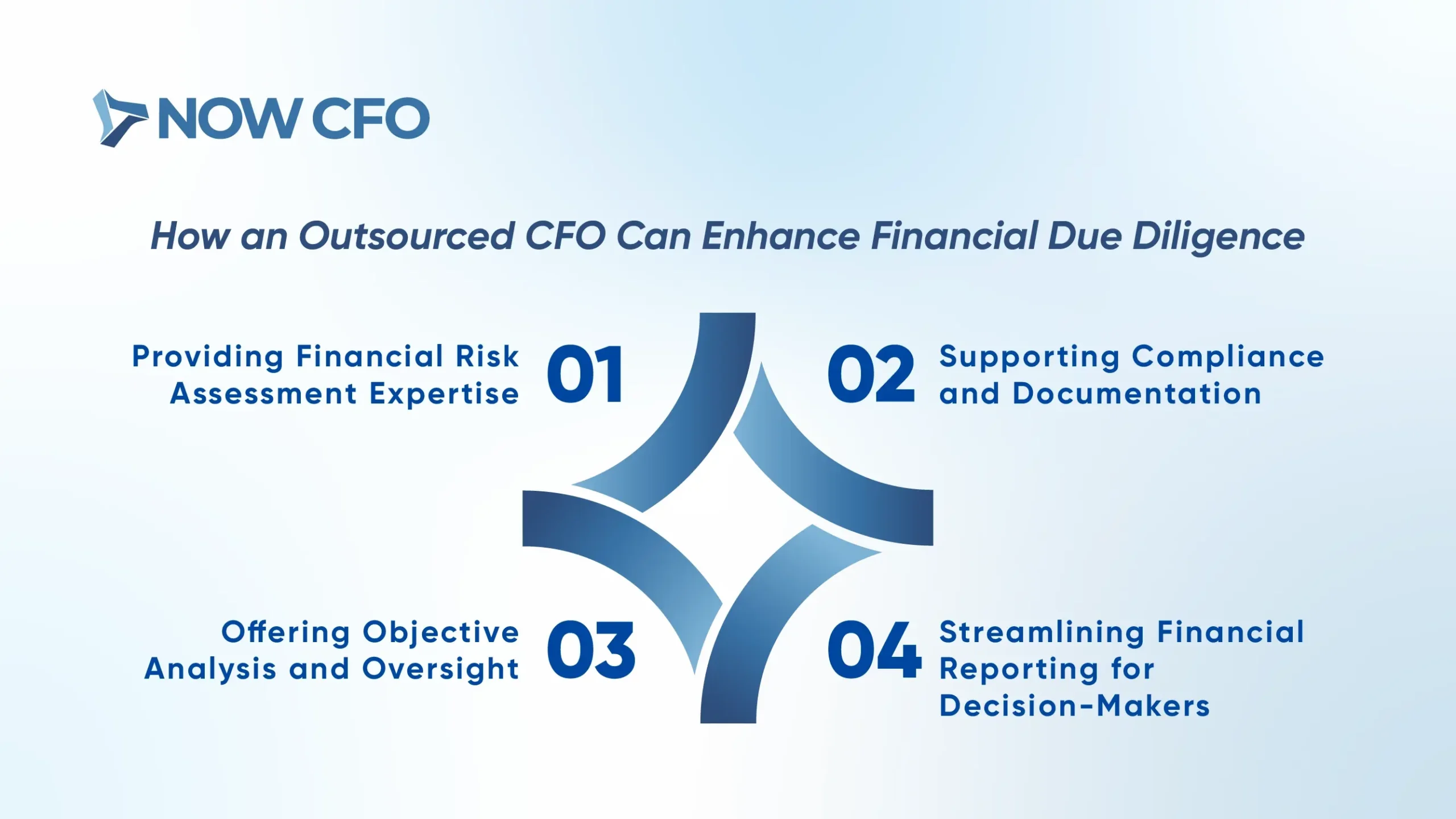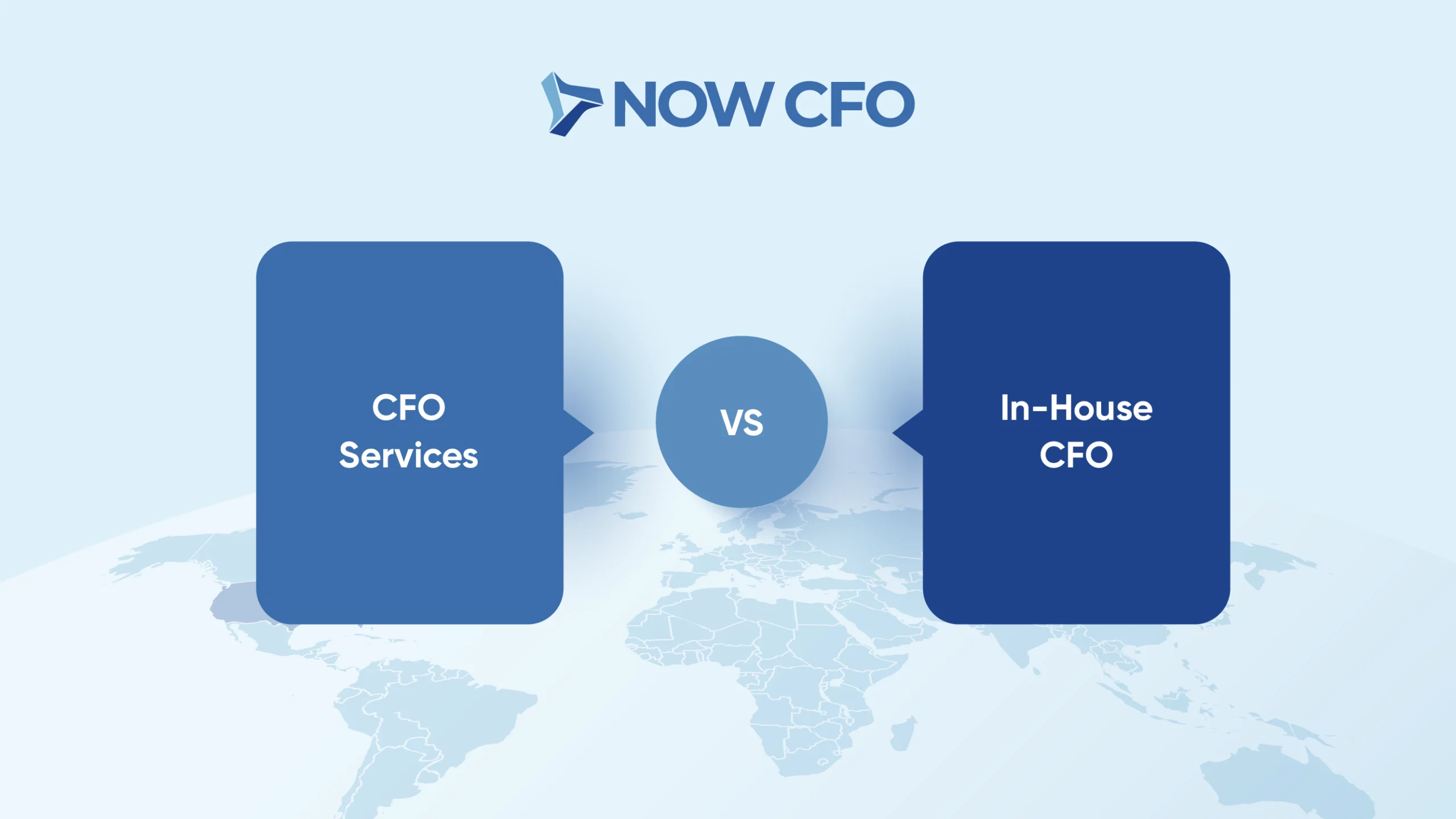
A financial due diligence checklist is critical in M&A, serving as the foundation for informed decision-making. Its significance is underscored by the fact that between 70% and 90% of M&A deals fail to achieve their anticipated value and potential.
This high failure rate highlights the necessity for thorough financial evaluations to identify potential risks, ensure compliance, and enhance stakeholder transparency.
What Is Financial Due Diligence?
A financial due diligence checklist evaluates a company’s financial health before engaging in significant business transactions such as mergers, acquisitions, or investments. This process involves meticulously analyzing financial statements, assessing assets and liabilities, and verifying cash flow stability.
The primary goal is to ensure that all financial information is accurate and complete, enabling informed decision-making.
Definition and Purpose of Financial Due Diligence
Financial due diligence provides a clear and accurate picture of a company’s financial standing. This involves:
- Analyzing Financial Statements: Reviewing balance sheets, income statements, and cash flow statements to assess profitability and financial stability.
- Evaluating Assets and Liabilities: Identifying owned resources and owed obligations to determine net worth.
- Assessing Cash Flow: Ensuring the company generates sufficient cash to meet its obligations.
Key Objectives in Business Transactions
In the context of M&A, financial due diligence serves several critical objectives:
- Risk Mitigation: Identifying potential financial pitfalls, such as undisclosed liabilities or irregularities, to avoid future losses.
- Valuation Assessment: Determining whether the company’s financial performance justifies its asking price, ensuring a fair valuation.
- Strategic Planning: Providing insights into financial strengths and weaknesses, aiding in developing post-transaction strategies.
- Compliance Verification: Ensuring adherence to financial regulations and accounting standards to prevent legal complications.
Types of Financial Due Diligence
Understanding the various types of financial due diligence is essential for comprehensively evaluating a company’s health during significant business transactions. Each type focuses on distinct aspects, providing a holistic view of potential risks and opportunities.
Operational Due Diligence
Operational due diligence assesses the efficiency and effectiveness of a company’s internal processes and operational infrastructure. This evaluation includes:
- Process Evaluation: Analyzing workflows to identify inefficiencies or bottlenecks.
- Resource Management: Reviewing the utilization of human and material resources.
- Supply Chain Analysis: Examining the robustness and reliability of supply chain operations.
Commercial Due Diligence
Commercial due diligence examines the market position and commercial viability of a company. Key components include:
- Market Analysis: Evaluating market size, growth potential, and competitive landscape.
- Customer Base Assessment: Analyzing customer demographics, satisfaction, and loyalty.
- Sales and Marketing Review: Assessing the effectiveness of sales strategies and marketing campaigns.
Financial Due Diligence
Financial due diligence involves a thorough examination of a company’s financial health. This process includes:
- Financial Statement Analysis: Reviewing income statements, balance sheets, and cash flow statements to assess profitability and financial stability.
- Accounting Practices Review: Ensuring compliance with accounting standards and identifying any irregularities.
- Revenue and Expense Verification: Confirming the accuracy of reported revenues and expenses.
Legal and Compliance Due Diligence
Legal and compliance due diligence focuses on a company’s adherence to legal and regulatory requirements. This assessment covers:
- Contract Review: Examining existing contracts for potential legal obligations or risks.
- Regulatory Compliance Check: Ensuring the company complies with industry-specific regulations and standards.
- Litigation History Analysis: Investigating past or ongoing legal disputes that could impact the company’s operations.
Buy-Side Financial Due Diligence
Conducting thorough buy-side financial due diligence is essential when acquiring a company to ensure a sound investment. This process involves a comprehensive evaluation of the target company’s financial health, uncovering potential risks, and validating the accuracy of financial information.
Definition and Scope
Buy-side financial due diligence refers to the investigative analysis by a potential acquirer to assess the economic aspects of a target company. This evaluation encompasses:
- Financial Statements Review: Analyzing income statements, balance sheets, and cash flow statements to assess profitability and financial stability.
- Quality of Earnings Assessment: Determining the sustainability and accuracy of reported earnings.
- Working Capital Analysis: Evaluating current assets and liabilities to ensure sufficient liquidity.
Essential Areas of Focus
During the due diligence process, acquirers should concentrate on several critical areas:
- Revenue Verification: Confirming the legitimacy and consistency of revenue streams.
- Expense Analysis: Identifying major cost drivers and potential areas for savings.
- Debt and Liabilities Examination: Assessing existing debts and any contingent liabilities that may impact future financial performance.
- Tax Compliance Check: Ensuring adherence to tax laws and identifying outstanding tax obligations.
Red Flags in Buy-Side Due Diligence
Identifying potential red flags during due diligence is crucial to mitigate risks. Common warning signs include:
- Inconsistent Financial Reporting: Discrepancies between reported figures and underlying data.
- Unusual Revenue Patterns: Sudden spikes or declines in revenue without clear justification.
- Pending Legal Issues: Ongoing litigation or regulatory investigations that could pose future liabilities.
- Poor Financial Controls: Lack of robust internal controls, increasing the risk of fraud or errors.
According to the SEC, thorough due diligence is vital for investment advisers when selecting alternative investments. It helps evaluate risk and ensures informed decision-making.
Sell-Side Financial Due Diligence Checklist
Conducting a thorough sell-side financial review is essential when selling a business. This proactive approach allows sellers to identify and address potential issues before negotiations, enhancing the company’s appeal to prospective buyers.
Definition and Scope
The sell-side financial due diligence involves a comprehensive review of a company’s financial health from the seller’s perspective. This process includes:
- Financial Statement Analysis: Examining income statements, balance sheets, and cash flow statements to ensure accuracy and transparency.
- Operational Assessment: Evaluating internal processes to identify inefficiencies or areas for improvement.
- Legal Compliance Review: Ensuring adherence to relevant laws and regulations to mitigate potential legal risks.
Key Preparation Steps
To effectively prepare for sell-side financial due diligence, consider the following steps:
- Organize Financial Records: Ensure all financial documents are up-to-date and accurately reflect the company’s performance.
- Identify and Address Weaknesses: Recognize areas of concern and implement corrective measures to strengthen the company’s financial position.
- Assemble a Due Diligence Team: Engage professionals with finance, law, and operations expertise to conduct a thorough review.
- Develop a Comprehensive Information Package: Prepare detailed reports and presentations highlighting the company’s strengths and growth potential.
Benefits of Sell-Side Due Diligence Checklist
Engaging in sell-side financial due diligence offers several advantages:
- Enhanced Negotiation Position: A transparent financial overview enables sellers to negotiate from a position of strength.
- Reduced Transaction Time: Addressing potential issues beforehand can expedite the due diligence process conducted by buyers.
- Increased Buyer Confidence: Providing detailed and accurate information fosters trust and may lead to better offers.
According to a report by ICSI, sell-side due diligence assists the vendor in obtaining the best value on the deal.
Financial Due Diligence in M&A Transactions
Engaging in M&A requires meticulous financial due diligence to ensure informed decision-making and successful integration. This process involves a comprehensive evaluation of the target company’s financial health, uncovering potential risks, and validating the accuracy of financial information.
Role in Mergers and Acquisitions
In M&A transactions, the financial due diligence checklist serves several critical functions:
- Risk Assessment: Identifying financial risks, such as undisclosed liabilities or irregularities, could impact the transaction’s success.
- Valuation Verification: Ensuring the target company’s financial performance justifies its valuation, facilitating fair pricing.
- Strategic Fit Analysis: Determining whether the target’s financial status aligns with the acquirer’s strategic objectives.
According to the FDIC, adequate due diligence is essential for maintaining compliance and mitigating risks during mergers and acquisitions.
Scope of Financial Due Diligence Checklist in M&A
The scope of financial due diligence in M&A transactions typically includes:
- Historical Financial Performance: Reviewing past financial statements to assess profitability and revenue trends.
- Quality of Earnings: Evaluating the sustainability and accuracy of reported earnings.
- Working Capital Analysis: Assessing current assets and liabilities to ensure sufficient liquidity.
- Debt and Liability Assessment: Identifying existing debts and potential financial obligations.
- Cash Flow Analysis: Examining cash flow statements to evaluate the company’s ability to generate cash.
Common Pitfalls in M&A Due Diligence
Despite its importance, financial due diligence can encounter several pitfalls:
- Insufficient Depth: Failing to conduct a thorough analysis can lead to overlooked risks.
- Overreliance on Provided Information: Accepting the target’s financial data without independent verification may result in inaccuracies.
- Neglecting Integration Planning: Overlooking post-transaction integration can cause operational disruptions.
To mitigate these pitfalls, it’s crucial to:
- Engage Experienced Professionals: Involve experts with a deep understanding of financial analysis and M&A transactions.
- Conduct Independent Verifications: Perform third-party audits to confirm the accuracy of financial information.
- Plan for Early Integration: Develop a detailed integration strategy during due diligence.
Key Questions to Ask During Financial Due Diligence
Conducting thorough financial due diligence is essential for evaluating a company’s financial health and identifying potential risks. Asking the right questions in key areas can provide valuable insights for informed decision-making.
Revenue Stability and Profit Margins
- What are the company’s primary revenue streams, and how consistent have they been over the past few years?
- How do the company’s profit margins compare to industry benchmarks, and what factors contribute to variances?
- Are there any significant fluctuations in revenue or margins that need explanation?
Debt and Liability Assessment
- What is the current debt structure, including short-term and long-term liabilities?
- Are there any off-balance-sheet liabilities or contingent obligations that could impact financial stability?
- What are the terms and covenants associated with existing debt agreements?
Cash Flow Patterns
- What are the historical cash flow trends, and how do they align with reported earnings?
- Should any seasonal variations or irregularities in cash flow be considered?
- How effective is the company’s cash management strategy in maintaining liquidity?
Compliance with Tax and Regulatory Requirements
- Has the company been subject to any recent tax audits or regulatory investigations?
- Are there any outstanding tax liabilities or compliance issues that could pose future risks?
- How does the company ensure adherence to applicable laws and regulations in its operations?
Cost and Expense Management
- What are the major cost drivers, and how have they evolved?
- How does the company’s expense management compare to industry standards?
- Are there opportunities for cost optimization without compromising operational effectiveness?
Financial Due Diligence Checklist
When conducting due diligence, it’s essential to meticulously review the M&A financial checklist to assess a company’s operational health and capitalization structure.
Business & Operational Documents
A thorough examination of business and operational documents provides insight into a company’s strategic direction and compliance framework. Key documents include:
- Pitch Decks: These presentations outline the company’s business goals, value proposition, and growth projections. Analyzing pitch decks helps assess the company’s market positioning and plans.
- Road Maps: Strategic road maps detail the company’s planned initiatives and timelines. Evaluating these documents reveals the feasibility of achieving set objectives and alignment with industry trends.
- Legal Documents: Ensuring regulatory adherence is crucial. Reviewing legal documents such as contracts, licenses, and compliance records verifies that the company operates within legal frameworks, mitigating potential legal risks.
- Articles of Incorporation: These foundational documents establish the company’s legal existence and governance structure. Confirming their accuracy ensures the company’s legitimacy and adherence to statutory requirements.
- Corporate Bylaws: Bylaws define the internal rules governing the company’s operations and management. Reviewing them provides insight into decision-making processes and organizational hierarchy.
Capitalization
Understanding a company’s capitalization is vital for evaluating its financial health and ownership structure. Key documents include:
- Cap Table (Capitalization Table): This document details the company’s ownership distribution, including equity shares, convertible securities, and options. Verifying the cap table ensures clarity in ownership stakes and potential dilution risks.
- Term Sheets: Term sheets outline the terms and conditions of investment or financing agreements. Reviewing them provides insight into investor rights, financial obligations, and the company’s valuation during fundraising rounds.
Financial Statements & Projections
A comprehensive analysis of financial documents provides insight into a company’s past performance and prospects. Key documents include:
- Financial Statements (Last 1-2 Years): Reviewing recent income statements, balance sheets, and cash flow statements helps assess the company’s profitability, liquidity, and overall financial stability.
- Financial Projections (Next 2 Years): Evaluating projected financial statements allows for assessing anticipated growth and revenue forecasts, providing insight into the company’s strategic planning and market expectations.
- Financial Models (Current/Previous Year): Analyzing the assumptions and methodologies used in financial models can help one understand the company’s financial planning and forecasting accuracy.
- Financial Liabilities, Loans, or Encumbrances (Current Period): Reviewing existing debts and obligations is crucial to understanding the company’s financial commitments and potential risks associated with its capital structure.
- Statements of Comprehensive Loss (Last 1-2 Years): Identifying any comprehensive losses provides insight into areas where the company may be experiencing financial challenges and highlights potential stakeholder concerns.
Agreements & Contracts
Examining legal agreements is vital to understanding the company’s obligations and rights. Key documents include:
- Buy-Sell Agreements: Confirming ownership terms and conditions ensures clarity in ownership structures and succession planning, essential for maintaining business continuity.
- Intellectual Property Documents: Verifying IP protection documents, such as patents and trademarks, ensures the company’s intellectual assets are legally safeguarded, which is crucial for maintaining competitive advantage.
- Leases: Reviewing lease agreements for properties and equipment helps assess ongoing obligations and potential liabilities, providing insight into the company’s operational commitments.
- Contracts & Invoices for Top Clients: Evaluating agreements with major clients assess the stability and reliability of revenue streams, highlighting the company’s market position and customer relationships.
- Material Contracts: Documenting critical agreements, such as supplier and partnership agreements, is essential to understanding the company’s operational dependencies and potential risks.
Organization & Hiring
Understanding the company’s organizational structure and human resources is crucial for evaluating its operational efficiency. Key documents include:
- Corporate Policies and Training Information: Checking compliance with internal policies and training programs ensures the company adheres to industry standards and fosters a competent workforce.
- Org Chart: Confirming the organizational structure clarifies roles, responsibilities, and reporting lines, vital for assessing management effectiveness.
- Team Bios: Assessing the experience and qualifications of key personnel helps evaluate the leadership team’s capability to execute the company’s strategic objectives.
- Hiring Roadmap (Next 2 Years): Reviewing growth strategies related to staffing plans offers insight into the company’s future expansion and its alignment with business goals.
Importance of Each Due Diligence Step
Conducting thorough financial due diligence is essential for making informed business decisions. Each step in this process plays a critical role in evaluating a company’s overall health and potential.
Financial Health and Stability Assessment
Assessing a company’s financial health involves analyzing financial statements, cash flow, and profitability metrics. This step ensures that the business is financially sound and capable of sustaining operations. Key aspects include:
- Reviewing Financial Statements: Analyzing balance sheets, income statements, and cash flow statements to understand the company’s financial position.
- Evaluating Profitability: Assessing profit margins and return on investment to determine financial performance.
- Analyzing Cash Flow: Examining cash inflows and outflows to ensure liquidity and operational efficiency.
Identifying and Mitigating Potential Risks
Identifying potential risks involves uncovering financial discrepancies, legal issues, or operational challenges that could impact the business. Mitigating these risks is crucial for safeguarding investments. Key considerations include:
- Detecting Financial Discrepancies: Uncovering inconsistencies in financial records that may indicate underlying problems.
- Assessing Legal Compliance: Ensuring the company adheres to relevant laws and regulations to avoid legal liabilities.
- Evaluating Operational Risks: Identifying inefficiencies or challenges in business operations that could affect performance.
Enhancing Stakeholder Transparency
Due diligence promotes transparency by providing stakeholders with a clear understanding of the company’s operations and financial status. This openness builds trust and facilitates informed decision-making. Key elements include:
- Open Communication: Sharing findings with stakeholders to ensure everyone is informed.
- Detailed Reporting: Providing comprehensive reports that outline the company’s strengths and weaknesses.
- Stakeholder Engagement: Involving key stakeholders in the due diligence process to address concerns and expectations.
Supporting Compliance
Ensuring compliance with legal and regulatory standards is vital to due diligence. This step helps prevent legal issues and promotes ethical business practices. Key actions include:
- Reviewing Legal Documents: Examining contracts, licenses, and permits to ensure validity and compliance.
- Assessing Regulatory Adherence: Confirming that the company complies with industry-specific regulations and standards.
- Implementing Compliance Programs: Establishing policies and procedures to maintain ongoing compliance.
How an Outsourced CFO Can Enhance Financial Due Diligence
Engaging an outsourced CFO brings specialized expertise to the financial due diligence process, ensuring a comprehensive evaluation of a company’s financial health.

Providing Financial Risk Assessment Expertise
An outsourced CFO offers in-depth knowledge in identifying and assessing financial risks. Key contributions include:
- Comprehensive Risk Analysis: Evaluating financial statements to detect potential red flags, such as inconsistencies or unusual trends.
- Strategic Risk Mitigation: Developing strategies to address identified risks, safeguarding the company’s financial interests.
Supporting Compliance and Documentation
Ensuring compliance and regulatory adherence is vital during due diligence. An outsourced CFO assists by:
- Regulatory Compliance: Reviewing financial practices to ensure they meet industry regulations and legal requirements.
- Accurate Documentation: Overseeing the preparation and organization of financial documents, facilitating a transparent due diligence process.
Offering Objective Analysis and Oversight
An outsourced CFO provides an unbiased perspective, which is crucial for objective financial analysis. Their role includes:
- Independent Evaluation: Assessing financial data without internal biases, leading to impartial insights.
- Strategic Oversight: Guiding the due diligence process with a focus on objective financial assessment and strategic alignment.
Streamlining Financial Reporting for Decision-Makers
Effective financial reporting is essential for informed decision-making. An outsourced CFO contributes by:
- Efficient Reporting Processes: Implementing streamlined procedures to produce timely and accurate financial reports.
- Clear Communication: Presenting financial data in an accessible format, enabling decision-makers to grasp complex information swiftly.
Conclusion
A thorough financial due diligence checklist is vital for making informed decisions and mitigating risks in business transactions. From assessing financial health and stability to ensuring regulatory compliance, each step plays a crucial role in safeguarding investments and fostering successful outcomes.
Partnering with professionals can streamline this process and provide the expertise needed for comprehensive evaluations. Contact NOW CFO today to ensure your financial decisions are backed by expert insight and meticulous analysis.














